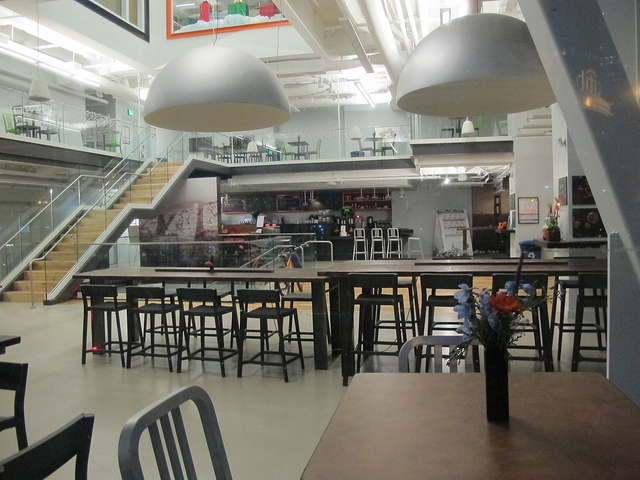Big banks are redesigning branches as cafes, boats, 'concept stores'


In an age of smart-phone and tablet personal banking apps, you'd guess that the large, physical bank branch would fast become extinct, much like a dinosaur. A special report on international banking in The Economist's latest print edition (May 19th-25th) acknowledges that bank branches will likely decrease in number, as well as how they are evolving in terms of their design to survive in some form.
Not surprisingly, big banks are looking to retail models to remake their physical outposts. And whom do they take inspiration from? Apple and Starbucks. While The Economist article doesn't reveal too many new examples, the report does provide an overview of trends. Citigroup, for instance, has opened a sleek outpost in Singapore with"gleaming white benches with tidy rows of Apple computers" where "neatly dressed assistants brandish iPads with smart black leather covers," as the Economist describes it. " Guess who designed the space? Eight, Inc., the same firm that worked on Apple's iconic stores.
And in San Francisco this past January, ING Direct opened a new, gleaming cafe near Union Square. At the counter, employees sell and serve lattes and snacks, and offer customers information about opening savings accounts. However, no transactions take place there. After all, it is a cafe...not a traditional bank branch.
Banks are also working on new branch designs that seem to fit the specific markets where they're located. On one end of the spectrum, Brazil's Bradesco--one of the biggest banks in that nation--has launched a "bank on a boat." It floats on the Amazon and its tributaries to offer banking services to poor customers who don't live near a city. On the other end of the spectrum is the Parisian "flagship concept store" opened by France's BNP Paribas. Inside, there are fancy chandeliers and a "lounge" with elegant couches and flat-screen TVs. Video-conferencing with a banker there is possible, too.
What these designs have in common are the goal of experimenting with new ways of getting potential customers to interact with financial advisers, and to open and maintain accounts, of course. These attention-getting bank branches also obviously help with marketing the banks' brands as forward-thinking.
The efforts seems to be working, at least for Citigroup. The company has been adding new, slick bank branches in Singapore--there are 26 there now, and they have "won an outsized share of business," the Economist reports.
Statistics show that in the last decade or so, the number of bank branches has actually increased, even after the threat of online banking in the early 2000s. In the United States, the number of branches and offices has shot up 22% since 2000, to 90,000 nationwide, the Economist reports. But other data show that people are increasingly turning away from visiting branches, though. In the U.S., for instance, transactions in bank branches are falling at the rate of 5% a year, according to Novantas, a consultancy. Likely, customers are turning to online banking, finally--influenced, it seems, by the ease of getting online at any time via smart phones and tablets.
Can an appealing design help preserve the idea of the physical bank branch, though? Perhaps not design alone. But welcoming stores can certainly help to remake the experience of person-to-person contact with a bank employee and humanize a financial institution's offerings--which now, it seems, can include coffee. Such a human touch or a familiar-enough experience might help to lure in potential--and even skeptical-- customers who otherwise wouldn't step into a bank.
And watch out: retailers are taking note and are essentially re-designing the banking experience as well. Or is it the other way around? In Brazil, for instance, Magazine Luiza, a home electronics store, is now one of the fastest-growing providers of small loans in that nation. And although the Economist article doesn't mention it, in the United States, Walmart's Money Centers are blurring the boundaries between bank branches and retail spaces, too.
Image: Gary Soup/Flickr
[Via The Economist]
This post was originally published on Smartplanet.com